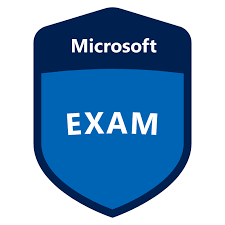Exclusive Courses | Microsoft AZ-104 Azure Administrator Course
AZ-104 Microsoft Azure Administrator Associate Certification SUPER Study Cram
- Experienced instructors with industry expertise
- Access to official guides and materials
- Covers all exam topics thoroughly
- Flexible study at your own pace
- Support for exam service
- Anytime access to study resources
What you'll learn
Training Course Outline
AZ-104 Azure Administrator Course
Training Options
Self Paced Learning
- Lifelong access to high-quality content
- Curated by industry experts
- Customized learning progress
- 24/7 learner assistance and support
- Follow the latest technology trends
Exam Dump
- 100% Real Exam Practice Tests
- 100% Verified Exam Questions & Answers
- 100% Guarantee Passing Rate
- Average 7 Days to Practice & Pass
Description
Learn the basic concepts you'll need to know as an Azure administrator and prepare for Exam AZ-104: Microsoft Azure Administrator.
Pre-requisites
Beginner-level certification with just 6 months experience needed

SPOTO Microsoft AZ-104 Exam Demo
This is the demo of SPOTO Microsoft AZ-104 real exam questions and answers.
Microsoft Azure Administrator Associate Exam & Certification
What is Microsoft Azure Administrator Associate Certification?
The Microsoft Azure Administrator Associate Certification validates expertise in managing Azure environments, including virtual networks, storage, compute, identity, security, and governance. Designed for IT professionals, it focuses on configuring and monitoring Azure resources, coordinating with teams for networking, security, and DevOps solutions. Candidates should understand operating systems, networking, and tools like PowerShell, Azure CLI, and Azure Resource Manager templates. This certification ensures professionals can maintain scalable, secure cloud infrastructures aligned with organizational goals. The Azure Administrator Associate Certification (AZ-104) equips professionals to manage Azure's core services, emphasizing identity, compute, and governance. The exam tests practical skills through scenario-based questions, while updated courses ensure alignment with hybrid cloud and AI trends. Mastery of deployment tools, monitoring frameworks, and cost optimization strategies ensures efficient, secure cloud operations, paving the way for advanced roles in Azure architecture or DevOps.
What is the AZ-104 Exam?
The AZ-104 exam assesses skills in administering Azure resources. It includes 40-60 questions, lasts 100 minutes, and requires a 700/1000 score to pass. Topics cover managing identities (Azure Active Directory, RBAC), implementing storage solutions (Blob, Disk), deploying compute resources (VMs, Kubernetes), configuring virtual networks, and monitoring resources using Azure Monitor. The exam combines scenario-based and theoretical questions, emphasizing practical application. Free resources like Microsoft Learn modules and paid practice tests are recommended for preparation.
Are there any domains to prioritize when studying?
Prioritize Identity and Governance (15–20%) and Compute Resources (25–30%), as these are heavily tested. Focus on Azure Active Directory, RBAC, VM deployment/scaling, and Azure Kubernetes Service. Storage (15–20%) and Networking (30–35%) also require attention, particularly virtual networks, security groups, and hybrid connectivity. Use hands-on labs for Azure Portal and CLI to reinforce concepts. Scenario-based questions often integrate governance with resource management, demanding interdisciplinary understanding.
Is this AZ-104 course aligned with the latest exam version?
Yes, courses updated align with Microsoft's latest exam syllabus, covering hybrid cloud management (Azure Arc), AI/ML integration, and updated governance tools like Azure Blueprints. Materials include refreshed modules on cost management, security best practices, and compliance frameworks (GDPR, ISO). Practice exams simulate the current format, emphasizing real-world scenarios such as optimizing VM performance or troubleshooting network latency. Always verify alignment with the official Microsoft Learn study guide for recent changes.
How do you deploy/manage Azure compute resources? And monitor/maintain them?
Deploy compute resources via Azure Portal, CLI, or ARM templates, configuring VMs, scaling sets, or Azure Kubernetes clusters. Use Azure Monitor for performance tracking, setting alerts for CPU/memory thresholds, and analyzing logs via Log Analytics. Implement Azure Backup and Site Recovery for disaster resilience. For governance, apply Azure Policy to enforce compliance and Azure Cost Management to optimize spending. Regular maintenance includes updating resource SKUs, patching OSes, and auditing access controls.